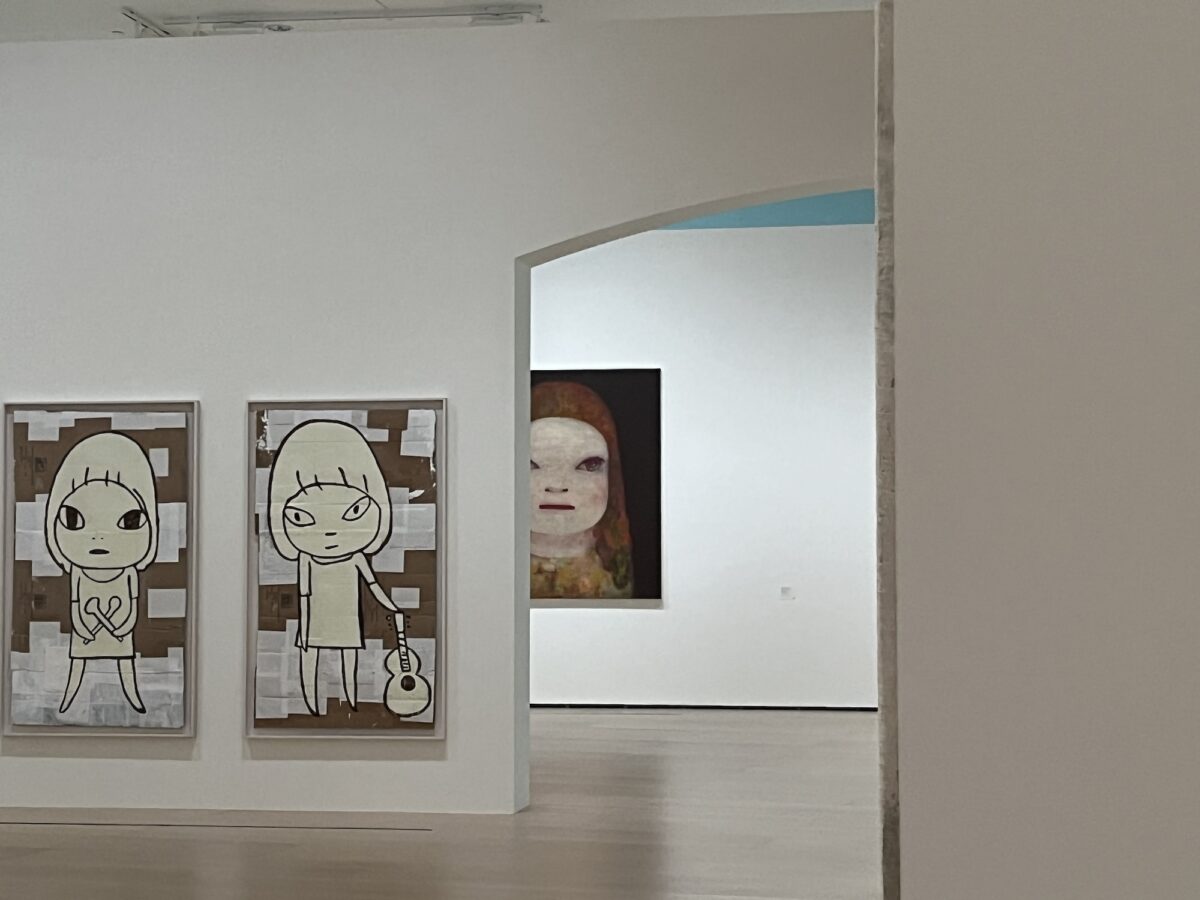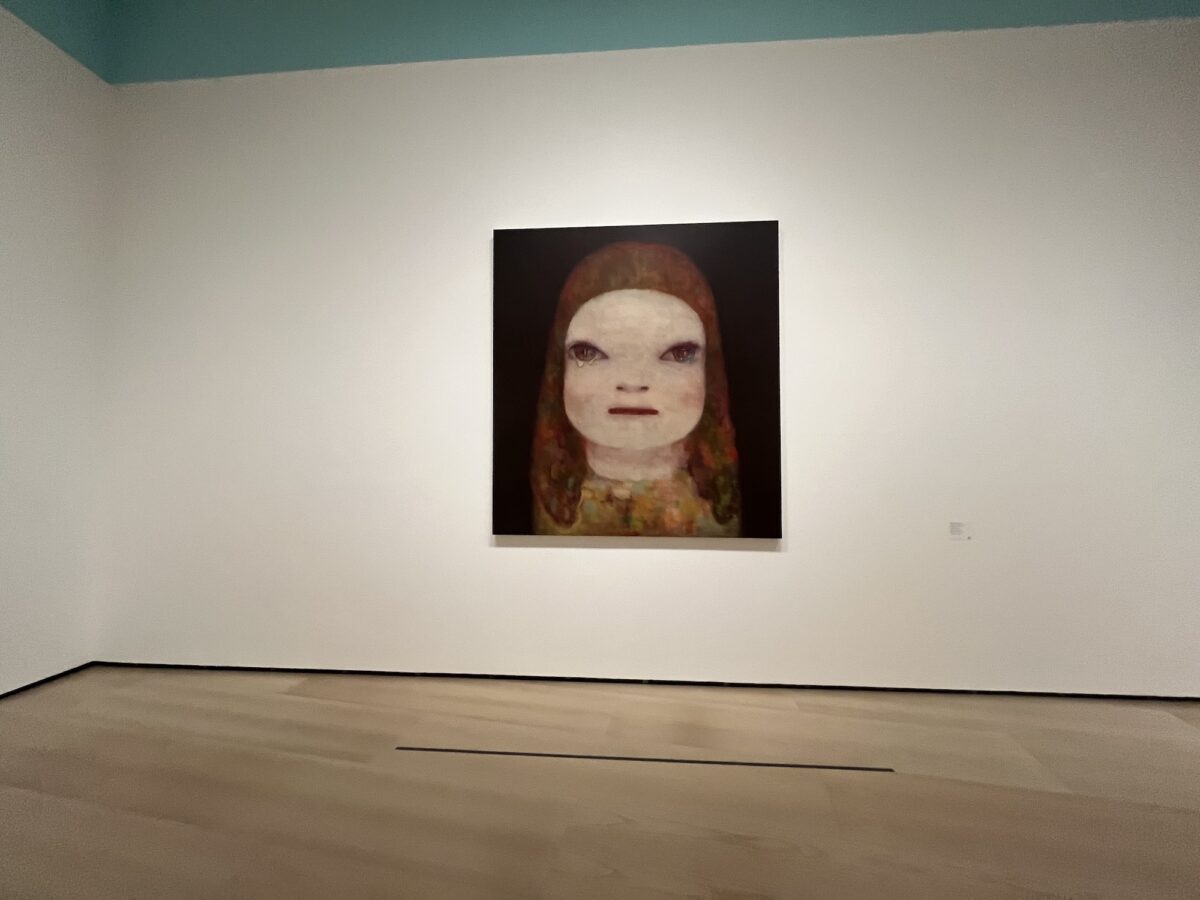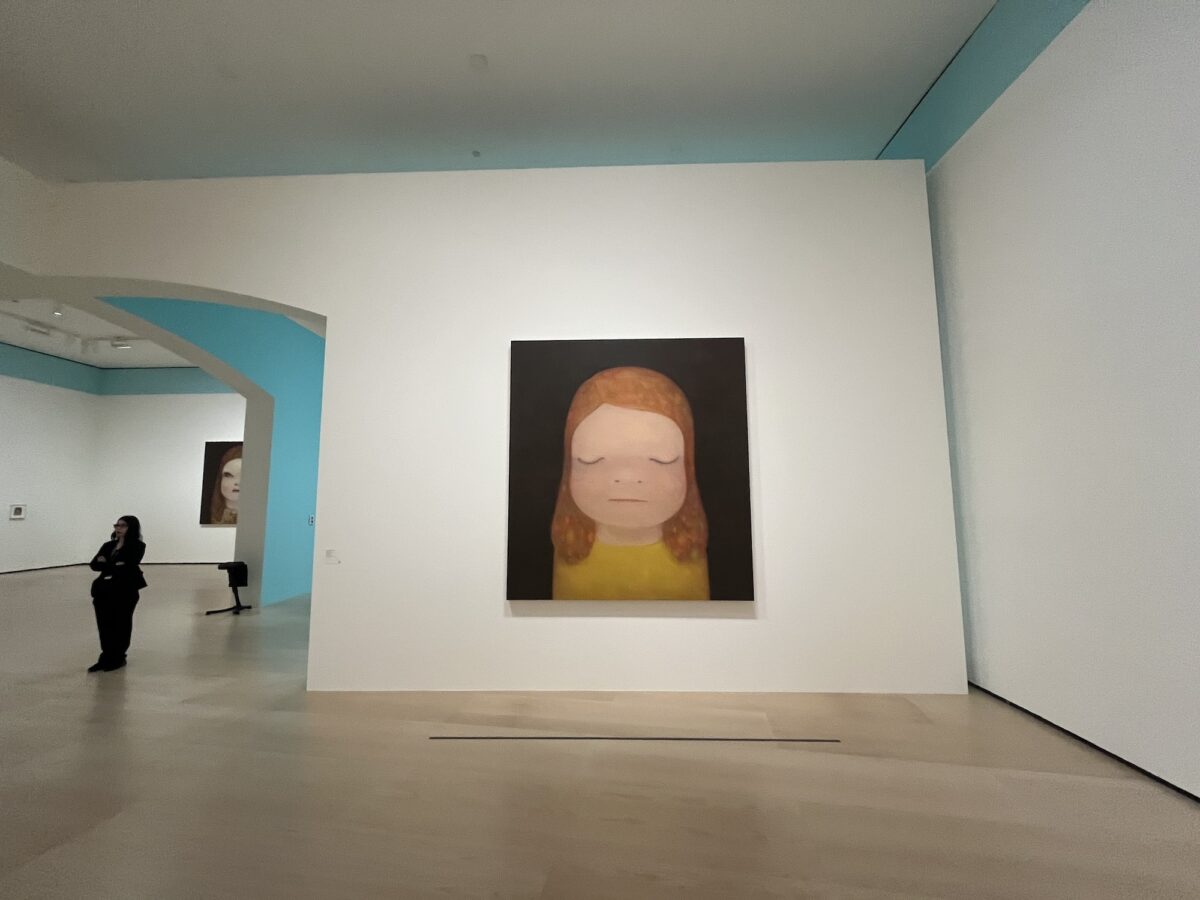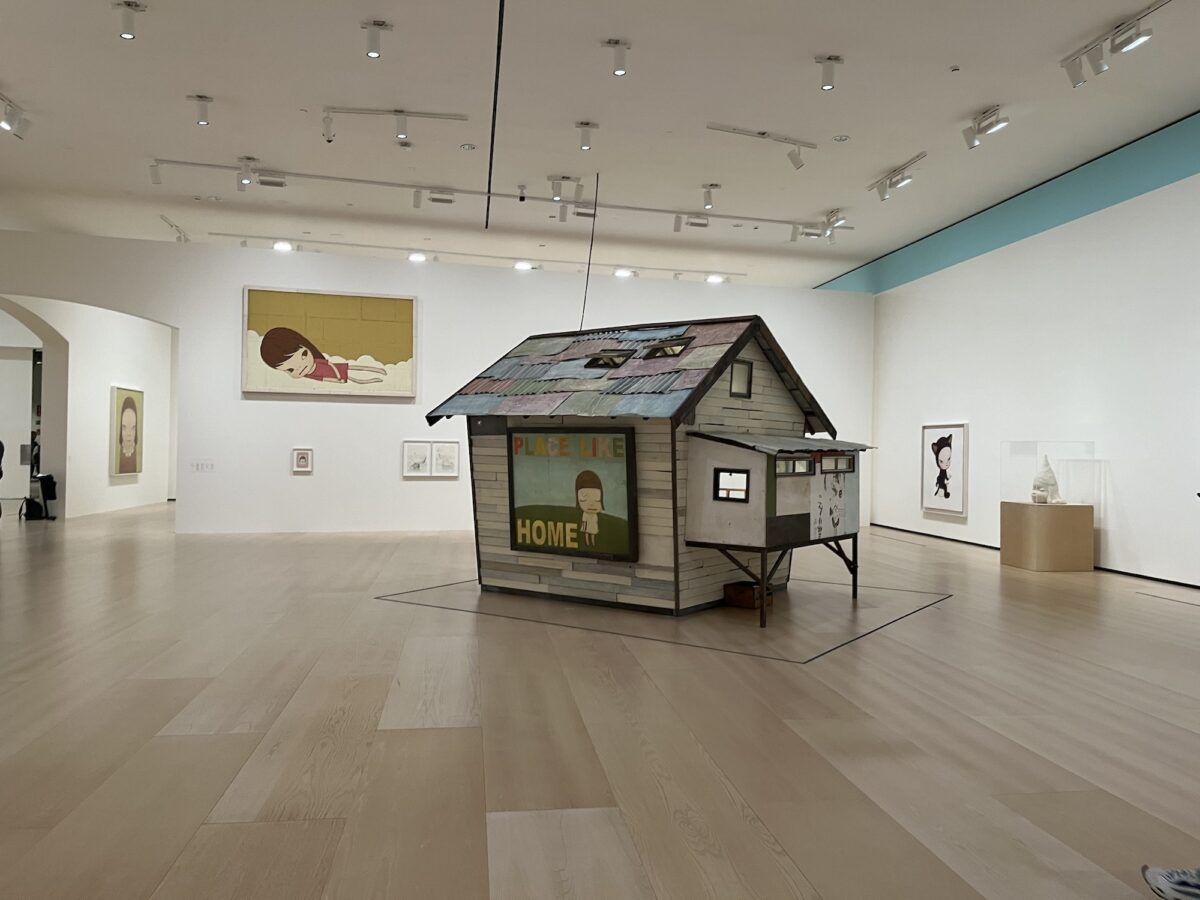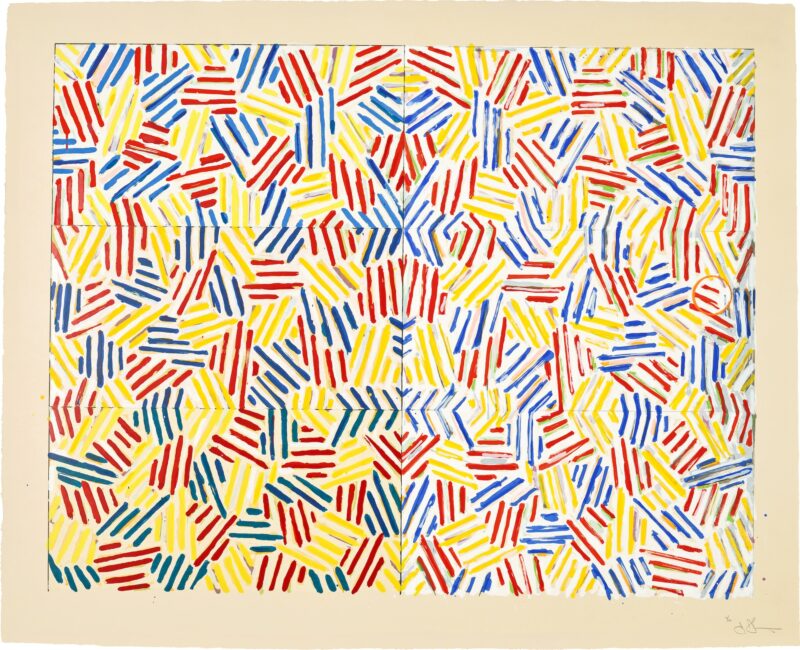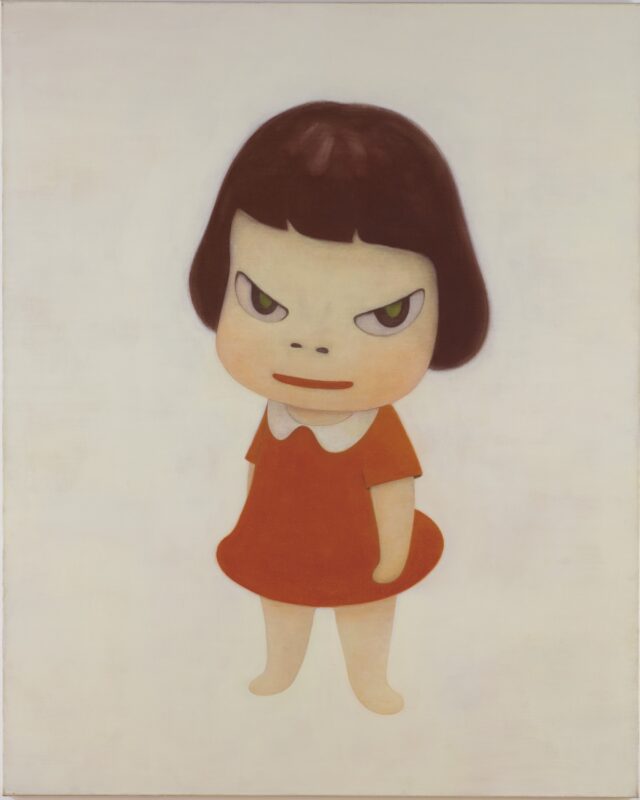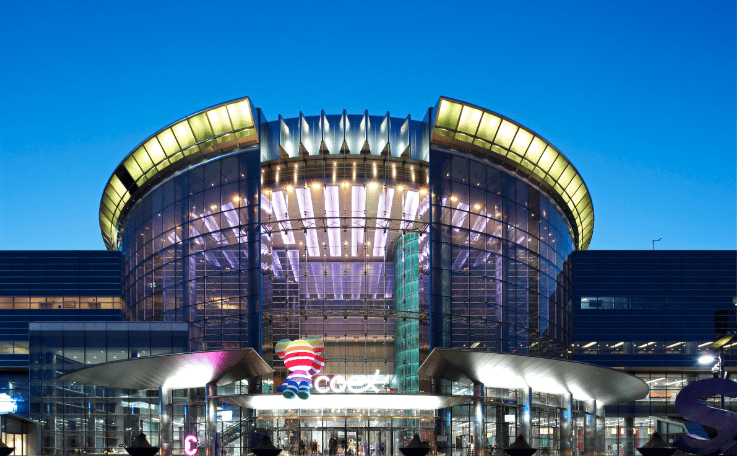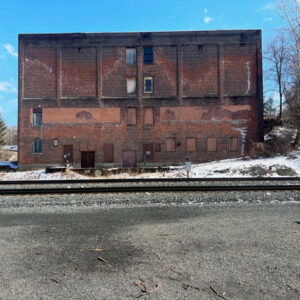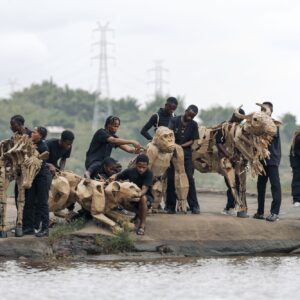Yoshitomo Nara – Guggenheim Museum Bilbao- This is the first major solo exhibition of Yoshitomo Nara’s work to be held in a European museum. On the face of it Nara’s paintings are sweet, simple cartoony/illustrative paintings but what this exhibition shows is that they are much more than that they have a depth that is a match for any contemporary painter. They reflect Nara’s innermost feelings and when you look you see – Fear, loss, isolation, and trauma you can sense the artist’s and the children’s feelings of incomprehension & melancholy.

Nara’s paintings of children evoke an effect similar to Rothko’s, enveloping you in overwhelming emotions. However, unlike Rothko’s work, Nara’s paintings make it clear who needs help and protection, guiding you towards hopefully making a positive difference.
The exhibition’s overall atmosphere is enhanced not only by its thematic curation but also by the exceptional design, led in-house by Iñaki Álvarez. The design features a fantastic colour scheme, delightful and engaging views, and a clever use of varied hanging heights. This creates a more intimate viewing experience, revealing hidden treasures in your peripheral vision.
The retrospective exhibition includes a large selection of paintings, drawings, sculptures, and installations made over four decades from 1984 to 2024 and shows Naras’ empathetic response to the people and places he encountered.
The exhibition is not organised chronologically or according to technique and materials but by theme (according to Nara’s specifications) however, you can definitely see a change after Nara’s time in Germany and studying under the artist A. R. Penck, who was a leading proponent of German Neo-Expressionism.
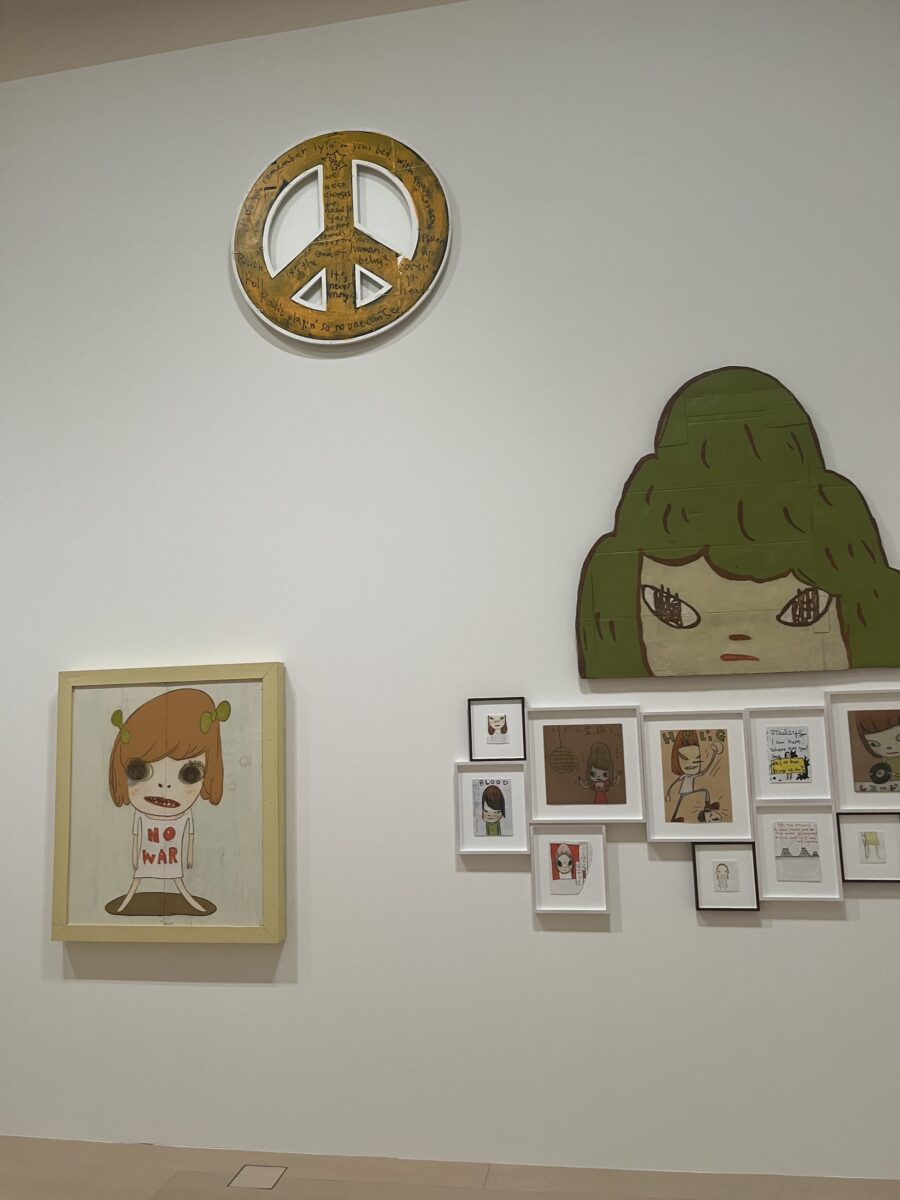
Nara’s childhood memories—marked by a feeling of isolation—his travels abroad, his time in Germany, and his knowledge of art history, are key to an understanding of his work. It is also deeply rooted in the music he listened to as a child: folk songs by American singer-songwriters like Bob Dylan, with their dissenting, antiwar message during the Vietnam war and support for the civil rights movement; the introspective, melancholic sounds of the blues; and grassroots folk music coming out of England and Ireland. With no understanding of the foreign-language lyrics, Nara absorbed the sounds on a sensory level. Combined with what he intuited from the album cover images, he understood the music on his own terms and invested it with personal emotion. This was long before the era of punk or new wave, from which Nara would later draw inspiration. Through music, Nara connected with a respect for humanity, community, and a sense of freedom.
On March 11th, 2011, Japan suffered the combined disasters of the Great East Japan earthquake, its resultant tsunami, and the nuclear accident at the Fukushima Daiichi power plant. The extent of the destruction caused by the power of nature had a life-changing impact on Nara. Faced with the enormity of the loss and the pain endured by those affected, he felt forced to reconsider his role as an artist and redirected his focus toward the Tohoku region, where he had grown up. Nara saw how rural areas fared
badly, economically and culturally, in relation to the overwhelming demands of big cities like Tokyo, and he initiated local, community-based art projects.
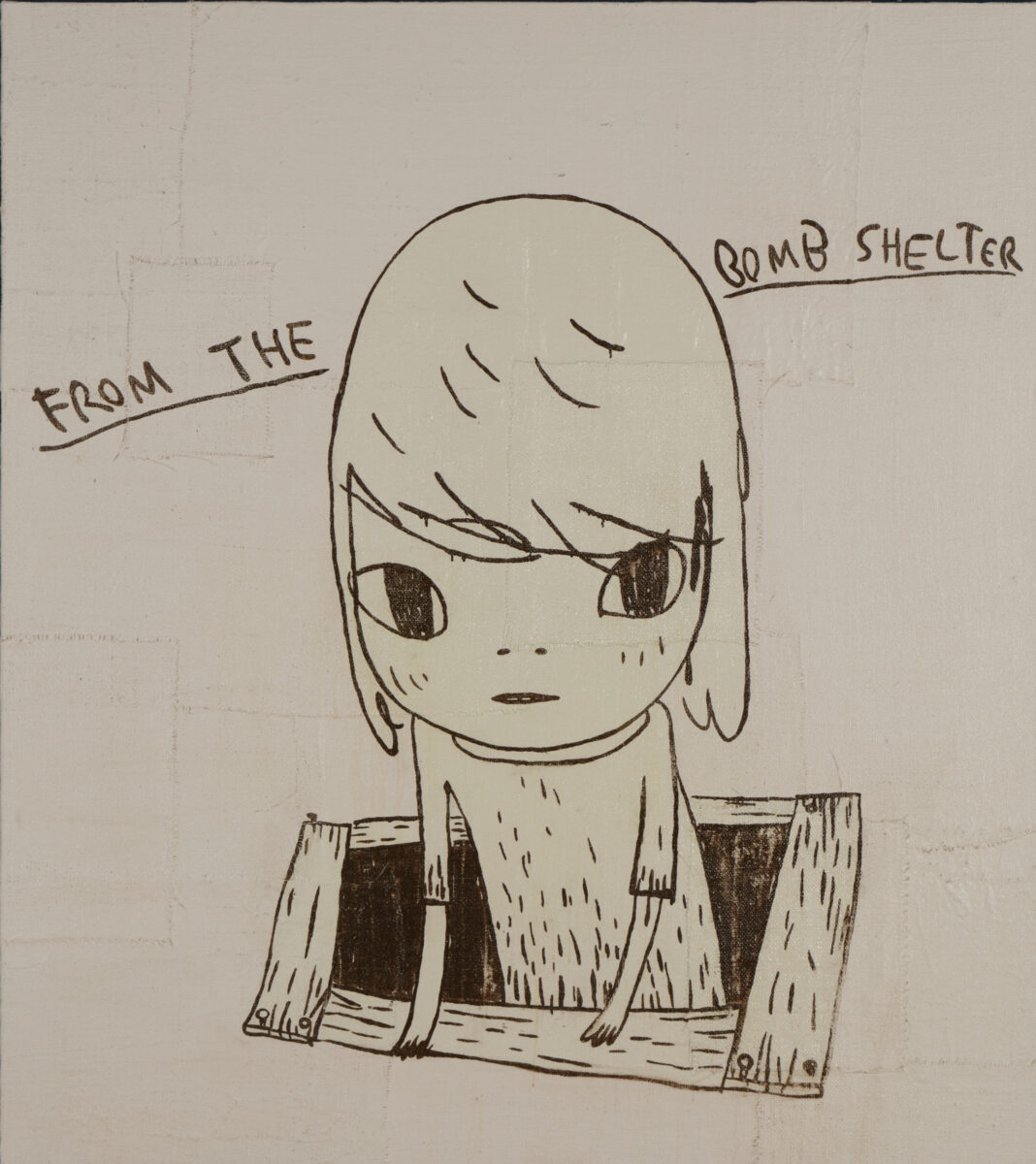
Collection of the Artist © Yoshitomo Nara, courtesy Yoshitomo Nara Foundation– Yoshitomo Nara – Guggenheim Museum Bilbao
Nara’s pictorial language reflected his changed view of the world. From the Bomb Shelter (2017) shows a child tentatively emerging from an underground bunker. His monochrome image represents a continuation and development of two of his most enduring motifs: the box and the submerged figure, who accesses a portal, connected to a communal domain, through a puddle. From the Bomb Shelter was inspired by the 1953 film Hiroshima, directed by Hideo Sekigawa, based on the best-selling book Children of the A-Bomb (1951), a collection of firsthand accounts of school children who survived the Hiroshima bombing.

A similar sense of uncertainty emanates from his paintings Blankey (2012) and, more recently, Midnight Tears (2023). The children appear ethereal, painted with fragmented, multiple touches of different colours, a move from the solid areas of colour seen in earlier works. Their horizontal, closed mouths give little away— the previously pouting or slightly upturned lips, verging on a smile, are gone—but deep emotion is communicated through their tear-filled eyes.
Yoshitomo Nara – November 3rd, 2024, Guggenheim Museum Bilbao
About the artist
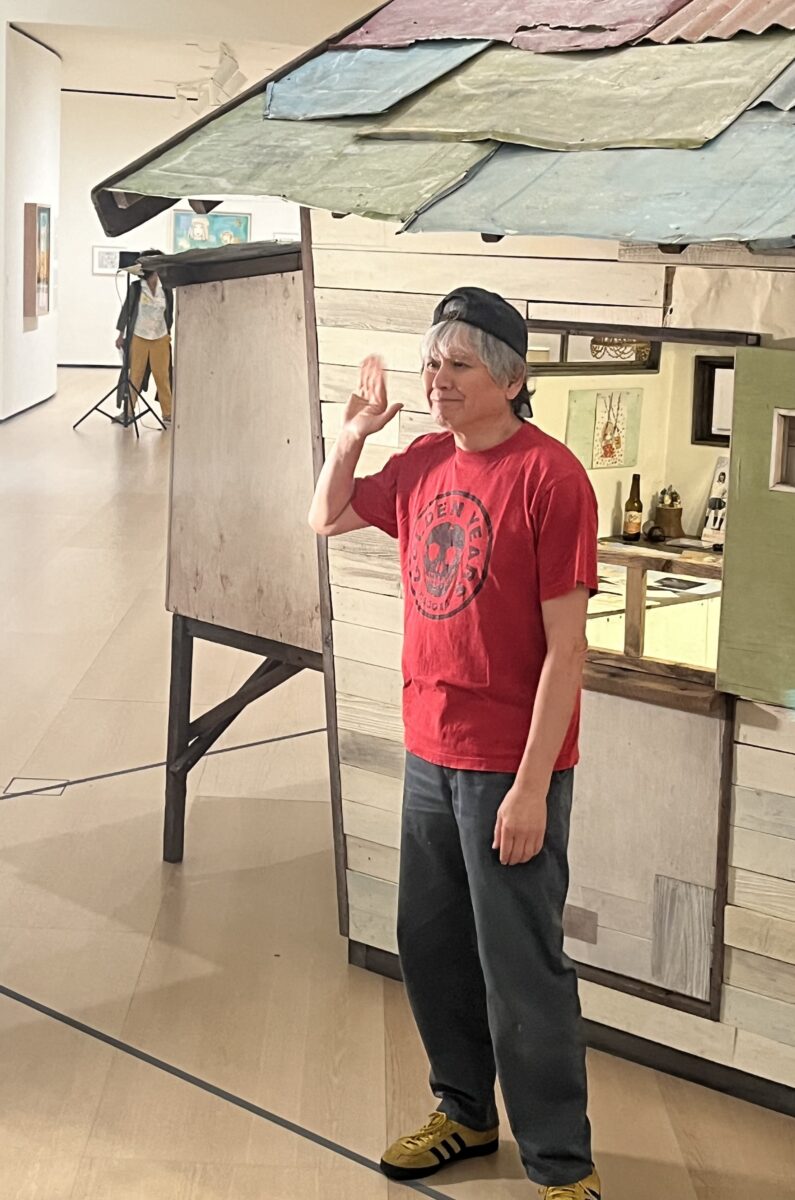
Yoshitomo Nara is a pioneering figure in contemporary art whose signature style—which expresses children in a range of emotional complexities from resistance and rebellion to quietude and contemplation—celebrates the introspective freedom of the imagination and the individual.
Yoshitomo Nara graduated from Aichi University of the Arts with a master’s degree in 1987, completing further studies at the Kunstakademie Düsseldorf, from 1988 to 1993, before settling in Cologne in 1994. This period of time was a pivotal influence on Nara, during which he began synthesizing Japanese and Western popular culture, as seen in Nachtwandern (1994), and when he arrived at his mature style, as seen in Pony Tail (1995) and Haze Days (1998). Nara’s paintings enact a fleeting presence between the figure and the ground—a result of several layers of paint in subtly varied if subdued pigments that he applies throughout the painting process—in which the figure pops out of or floats in a space that appears to exist outside the constraints of time.
Nara’s work spans painting, drawing, photography, large-scale installations, and sculpture in ceramic, bronze, and fiber-reinforced plastic. Influenced by popular music, memories of childhood, and current events, he filters these references through an exploratory realm of feelings, loneliness and rebelliousness especially, which span autobiographical as well as broader cultural sensibilities.
